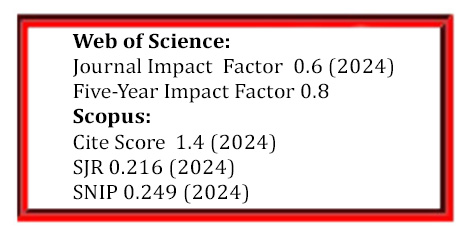Structural and Morphological Study of Silver Electrodeposits
Keywords:
silver electroplating, electrodeposition, nanostructure, XRD, STM.Abstract
The structure and morphology of silver deposits obtained from 5 types of electroplating baths under predetermined optimal electrodeposition conditions have been studied. The deposits were formed from solutions: (a) 0.2 M KAg(CN)2 + + 0.5M KCN + 0.2M KOH; (b) 0.2 M KAg(CN)2 + 2M KCNS + 1M K2CO3; (c) 0.13 M KAg(CN)2 + + 0.82M KH2PO4 + 0.41 M H3BO3 + 0.15 M K2CO3 + 0.69M KOH; (d) 0.2 M AgNO3 + 2.5 M NaCNS; (e) 0.3 M AgNO3 + 2 M Na2SO3. The obtained silver coatings as well as metallurgic silver were polycrystalline and nanocrystalline (the values of grain size were 36.9 – 56.5 nm). The peak broadening for electrodeposits is defined mainly by grain sizes whereas in metallurgic Ag one is governed my both grain sizes and microstrains The deposits obtained from the baths in which thiocyanate or sulfite Ag(I) complexes were a source of silver contain all possible textures like in metallurgic silver, whereas deposits obtained from the baths in which Ag(CN)2– complexes were a source of Ag(I) does not contain texture (220) or corresponding peak is negligibly low. The values of lattice parameter and interplanar distance are provided. The roughness of electrodeposits was evaluated based on the STM examination and are in the range 34.3 nm to 80.8 nm.
Downloads
Published
Issue
Section
License
The copyrights for articles in this journal are retained by the author(s), with first publication rights granted to the journal. By virtue of their appearance in this open-access journal, articles are free to use with proper attribution in educational and other non-commercial settings.



